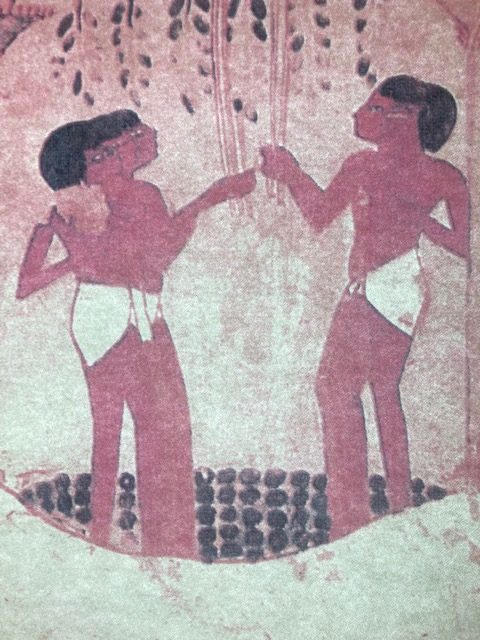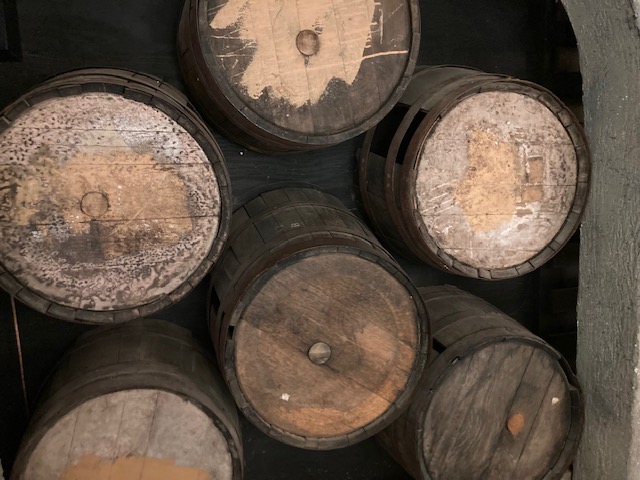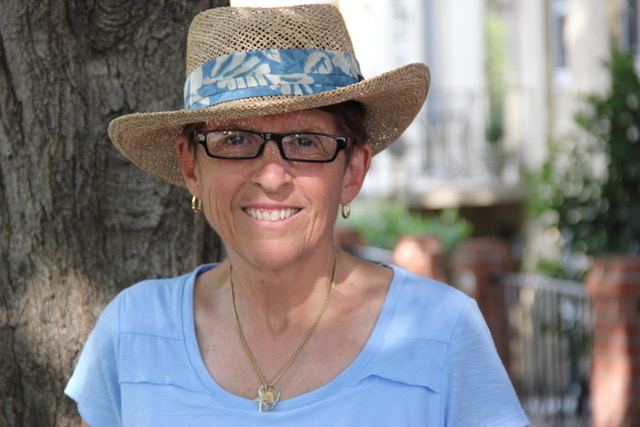And the Nassau Valley Vineyards Museum
There is a little sign near my kitchen sink that reads: “Last night I tried cooking with wine. After five glasses I couldn’t remember why I was even in the kitchen”.
Never fails to make me smile and, since I loved history in school, it also gets me thinking about the history of wine. The Nassau Vineyard has a small but fascinating museum on that very topic.
Some researchers say that the earliest remnants of wine were discovered in the archeological site of Hajji Firuz Tepe, in the northern Zagros Mountains of Iran. The wine dated back to the Neolithic period. Carbon dating confirmed the wine was from sometime between 5400-5000 B.C. Other experts claim that the earliest evidence of wine is from the Caucasus region in today’s Georgia (6000 BCE), Persia (5000 BCE), and Italy (4000 BCE).

Regardless, who first discovered wine and its colorful history is a bit complicated considering its curious blend of facts, myths and fables. The Nassau Vineyard Museum sheds quite a bit of light on the topic with nuggets of provocative information and illustrations that are interspersed among stacks of wine bottles and kegs along a mysterious-looking hallway.
For example, according to Geneses in the Bible, Noah was the first “wine grower” having planted a vineyard upon leaving the Arc.

The Egyptians were the first to record and celebrate the process of winemaking process in paintings and other art forms. They were superior technicians and are credited with inventing the wine press.
Wine also played a part in the remedies practiced by Hippocrates (The Greek physician known as the Father of Medicine). He used wine to cool fevers, as a diuretic, a general antiseptic, and as an aid in convalescence.

The Temple of Dionysus still stands on the Greek Island of Naxos, as a reminder of the God of wine. Legend says that festivals in his honor got out of hand and fostered debauchery. The Romans inherited Dionysus and renamed him Bacchus. The revelry continued before it was banned in 186 B.C. although wine making arrived in Italy long before that around 800 B.C.
The fall of the Roman Empire in Continental Europe left the Catholic Church in power to keep alive vital skills of civilization such as agriculture which included vineyards and, eventually, the nobility in Europe began to realize the profitability of wine making.

The Church has had a symbiotic relationship with wine starting with Jesus turning water into wine, according to scripture, and the importance of wine at the Last Supper. Priests sip wine at every Mass commemorating the blood of Christ.
Wine might also be considered nectar for the poor. The museum displays a mural from the of San Martino Buonomini in Florence depiction “act of compassion” – giving food to the hungry and wine to the thirsty. St Vincent is the Patron Saint of Wine in the church. Each year a pilgrimage takes place in France.

The Church has even been credited with helping to save the wine industry during Prohibition. One display at the museum explains other details of what happened to the wine industry during Prohibition.
For years, making the annual vintage for home use was a family tradition in Europe. Young and old participated in the process, including children. After the harvest, children would go to the cellar with pitcher in hand to draw a supply of wine for the family meal and wine was also used in the kitchen for preparing the meals.
Somehow, I don’t think the phrase on my kitchen sign applied in that scenario.
By Mary Jo Tarallo, Guest Journalist

Mary Jo Tarallo spent much of her career in public relations with various non-profits and spent 40 years involved with the ski industry as a journalist, public relations director for a national trade association and as executive director of the Learn to Ski and Snowboard initiative. Prior to her ski industry involvement she worked for the Maryland International Center in Baltimore and United Way of Central Maryland. She won a Gold Award for TV programming for a United Way simulcast that starred Oprah Winfrey. She has been cited for her work by numerous organizations. Mary Jo grew up in Baltimore, attended the University of Maryland and Towson University, lived in Washington, DC for 21 years and has been a full time resident of Rehoboth Beach and Milton since May 2019.